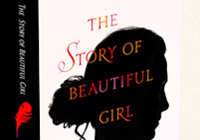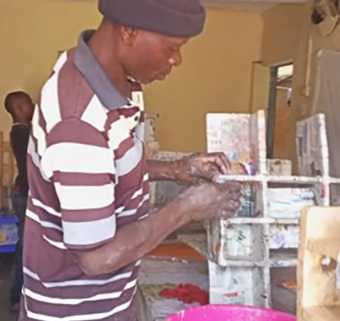Down Syndrome in Ancient Art
| October 2013In preparing for a presentation on disability history I gave two weeks ago to Ministry of Health and Social Service officials in Russia, I stumbled across the research of John M. Starbuck, who examined the depiction of people with Down syndrome in ancient and medieval art. His entire paper is worth looking at but one item stood out for me in particular.
In 1515 the painting “The Adoration of the Christ Child,” was created by a follower of the Dutch painter Jan Joest of Kalkar. A close look at the artwork reveals two characters who appear to have Down syndrome. One a shepherd–looking down at the scene from behind a post at the center of the painting–and the other an angel standing beside the mother Mary, these two participants in the nativity are situated in what would seem to be places of honor. Because the painter is unknown, his motive for placing them there can only be surmised. He may have had a child with Down syndrome or simply known individuals with the condition. At that time, the syndrome also may not have been formally diagnosed as it is today. What seems beyond doubt is that he felt they belonged there, in the midst of the holy scene.
Tears came to my eyes when first examining this painting: I have a younger sister with Down syndrome and can strongly relate to what the painter must have been trying to convey. Against what must surely have been a hostile environment for people with disabilities, his work attests to the power of love. I thought you’d appreciate seeing it too.
I don’t have to tell you which painting will be hanging on my wall this Christmas!










